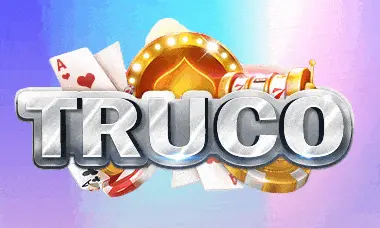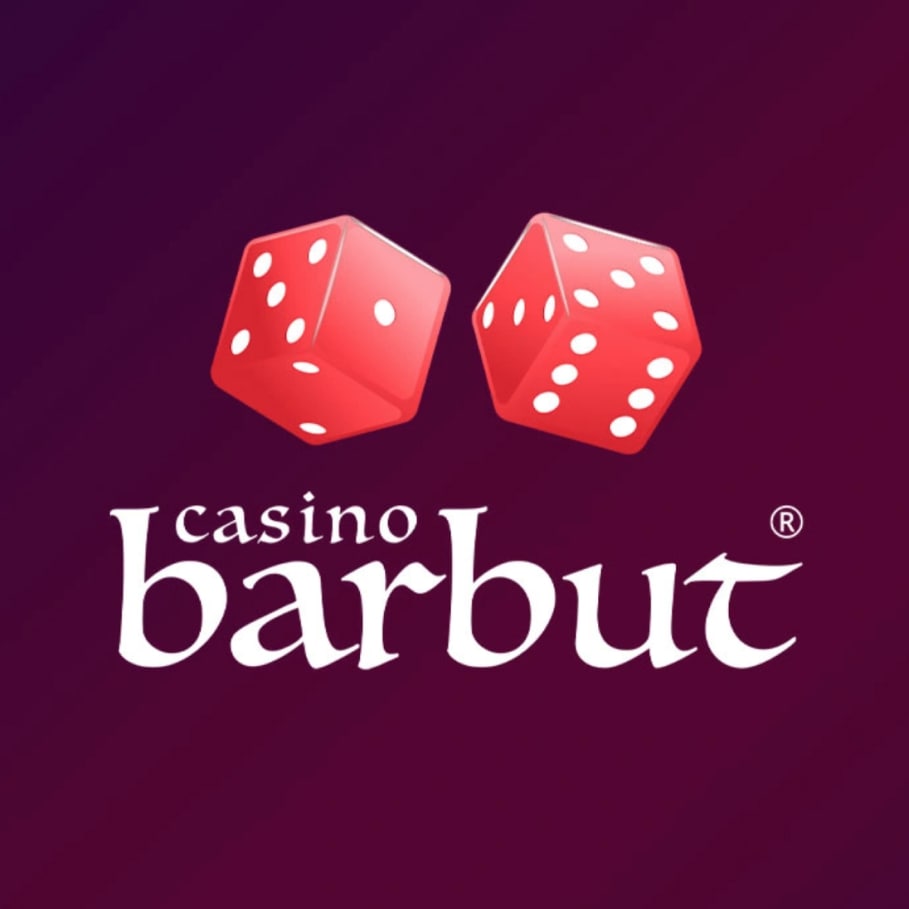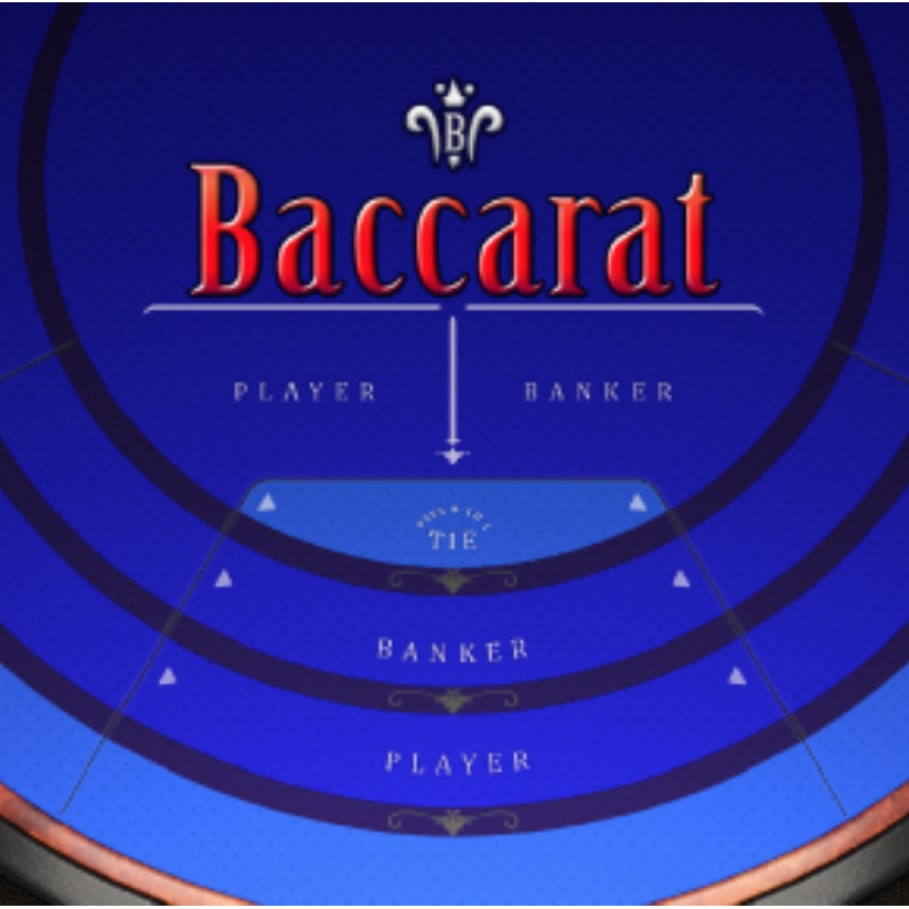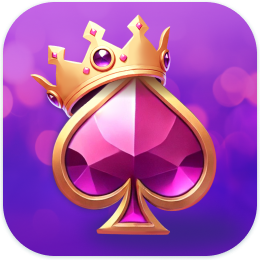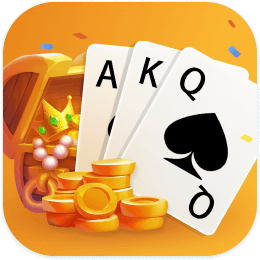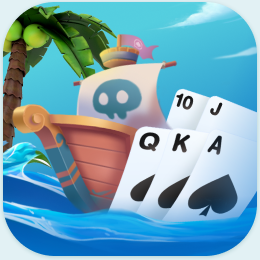Poker Tournament Strategy Tips For Winning More Often Blog

Learn essential poker tournament strategy and use these MTT tips to increase your win rate & ROI and approach your games like a pro. Pokercode
We know it seems like we are cheating when our first advice sounds like that, but hear us out.
Poker rooms, casinos, and especially online poker sites offer dozens of different tournament formats, so you need to know how to adjust your strategy to each.
Some of the most popular poker tournament formats available are:
- Freezout tournaments
- Rebuy tournaments
- Satellite tournaments
- Bounty tournaments
The general poker tournament strategy will help you increase your bottom line with each variant, but true poker crushers approach each of the formats individually, which helps them achieve even higher returns.
Just to put things in perspective, let’s compare freezeout poker tournaments and satellites.
In freezeout tournaments, the payouts are extremely top-heavy, so good players always go for the win in this format instead of trying to climb the ladder.
While in satellite tournaments, the prizes are distributed as equal value tournament tickets for the few top spots. Good players preserve their stack and don’t make high variance plays in these tournaments because there are no additional incentives to go for the first place as the rewards are the same.
Of course, this is a simple example, but it illustrates that there are huge differences in effective poker tournament strategy for different variations. Rebuy tournaments also have a different structure than freezeouts, and bounty events offer entirely new dynamics, so make sure to pick your favorite format and master it.
Fedor Holz and Matthis Eibinger at Triton London
Find Poker Tournaments With Weak Competition
A lot of articles with poker tournament tips focus on giving specific advice for specific situations regarding poker strategy, but they fail to mention the fact that you can gain EV before you even play your first tournament hand.
You need to focus on playing good games to increase your bottom line playing tournaments, just like with cash games.
To make this work, you need to play against weaker opposition and focus on playing in tournaments with soft fields and even overlays if you can find them.
Poker rooms often host tournaments with guaranteed prize pools based on their assumptions of how many players will participate. However, if fewer players register than expected, it becomes a tournament with an overlay.
For example, a poker site organizes a tournament with a $1000 guarantee, and the tournament entry is $11. $10 for the prize pool and $1 for the fee. To reach the guarantee, at least 100 players need to register, or the tournament will have an overlay.
If you see that much fewer players have entered the event and registration is closing soon, you might want to jump into it since your piece of the prize pool increases immediately.
For example, let’s take the following conditions:
The tournament has a $10,000 guarantee, and the entry costs $110, meaning the poker site needs 100 players to register to hit the guarantee.
If there are exactly 100 players of equal skill in this $10,000 tournament, each player has $100 in equity.
However, if there are 80 players of equal skill in this $10,000 tournament, each player has $125 in equity. When we subtract the tournament entry fee of $110, that leaves $15 of equity more for each player before the tournament even starts. That’s an extra 15% ROI, which is not something to sneeze at.
Of course, finding many significant events with overlays is difficult, so you should mostly concentrate on playing events with weak competition. Just know that when you find a tournament with a big overlay, you can jump above your usual buy-in since you get all that extra value from the get-go.
Fedor Holz at the 2021 World Series of Poker - Photo: Hayley Hochstetler/PokerNews
Master Strategy Adjustments For Various Stack Sizes
One of the main reasons why poker tournament strategy is so complex is the different stack sizes players have during various stages of the tournament.
In cash games, in most situations, players will have 100 BB or more, but players can have anywhere from less than 0.5 BB to 1,000 BB in MTTs, which greatly impacts the strategy.
Each situation in a tournament, both pre-flop and post-flop, is based on the stack sizes of the players involved. Understanding how different stack sizes impact game dynamics is one of the keys to becoming a successful poker tournament player.
If you ask good poker players to give you one advice on how to approach poker tournaments, most of them will say something like:
“Play early stages of tournaments more conservatively and play the late stages more aggressively.”
This advice is completely based on the stack sizes, as players have more BB in the early stages and less BB in the late stages, which means that you need a much stronger hand to go all-in at the beginning of the tournament than in the later stages.
Consider the following scenarios:
Scenario 1: Early stage of the tournament, the average stack is 200BB, and you have 230BB. 9-handed table.
UTG raises to 3BB (150BB), everyone folds, you are on the BTN with Js Jc, and you 3bet to 12BB, SB, and BB fold.
The action is on UTG, who 4bets to 36BB.
Scenario 2: Late stage of the tournament, the average stack is 30 BB, and you have 33 BB. 9-handed table.
UTG raises to 2.5 BB (23 BB), everyone folds, you are on the BTN with Js Jc, and you 3bet to 8 BB, SB, and BB fold.
The action is on UTG who 4bets to 23 BB (All in).
Although you are holding the same hand and the preflop action is very similar, making the same decision in both scenarios will rarely be the correct play.
More specifically, going all-in over your opponent 4bet in the first scenario will rarely be a good play, while calling your opponents all-in in the 2nd scenario will almost always be the correct play.
In the 1st scenario, the effective stack is 150 BB; in the 2nd scenario, the effective stack is 23 BB which makes all the difference in the world.
This is because you need to consider your hand’s absolute strength and your opponent’s range. The more BB they have, the stronger range they will play when going all in.
Chip stacks come in all different shapes and sizes depending on the tournament
Defend Your Big Blind A Lot
While this might be a bit counter-intuitive, you must defend your big blind with an extremely wide range. This is especially true when antes come into play, and you are getting ridiculously good odds to call almost any two cards.
In today’s games, most players use very small sizing, either sticking to min-raise or going for something around 2.2x, giving you very good odds for the call.
Let’s take a simple example to illustrate this further.
You are playing a 9max hand with 100/200 blinds and 25 chips ante, which makes the pot of 525 chips before the hand even stars. Let’s assume your opponent raises to 450 from the cutoff with around 38% opening range, and you only need to call 250 to see the flop.
In this scenario, you only need a bit over 20% equity to continue.
What hands cut it? Well, 72o has around 29% equity against that range, so it seems that you can call with whatever you have.
The same goes for playing against earlier positions as well since even against a tight 15% range, the weakest hand in poker has 26% equity, according to Equilab.
In reality, you should not be calling with every single hand since you might have a hard time realizing your full equity with weak holdings out of position, but it clearly illustrates that you can be playing extremely wide.
Not only that, but players will also start to steal less when they see you are not going anywhere without a fight. Contrary to this, if they see you are folding way too often, they start stealing even more, and that is not a spot you want to be in since you have to play out of position.
So get used to defending very wide ranges when you are sitting in the big blind, and you will be surprised that sometimes you get a walk when everyone folds and add those free chips to your stack.
What is PFR in Poker & How to Adjust Against Different Players?
Steal Blinds Aggressively
Going to the other spectrum of the coin, it makes sense to steal blinds aggressively and re-steal in favorable situations.
As we just discussed, big blind often has great odds to defend with any two cards, but players usually massively overfold in these situations. If this is the case, you should be stealing like crazy from late positions.
If you are using a small sizing, and your opponents are not defending enough, you are literally printing money by opening any two cards from the button. On top of that, even if they defend quite a bit but do that passively by almost always calling or giving up when they miss the flop, this is still an amazing opportunity to build your stack.
So when you have antes in play, make sure to steal aggressively and not only from the button but also from other late positions. Of course, this does not mean you need to start firing right and left at the early stages of tournaments, but it will surely help you add quite a few chips to your stack in the late stages.
Just make sure to think about what players are sitting in the blinds, and if they let you steal effectively by playing too passively and making huge mistakes postflop, make sure to take advantage of that.
Rainer Kempe playing the 2019 Pokercode Festival Main Event
Learn The Independent Chip Model - ICM
The ICM is a mathematical model that poker players use to calculate each player’s equity in the tournament.
Remember when we earlier calculated the equity of each player in the $10,000 guarantee tournament? Well, we used ICM.
In cash games, the value of the chips is always the same and correlates to $1 = $1 chip, the more chips you have, the more money you have.
However, in tournaments, things are a little bit different, which is why you must learn ICM to make better decisions.
For example, let’s say three players of the same skill are playing sit-and-go tournaments with a $1,050 entry fee ($50 poker site fee).
The total prize pool is $3,000 with this price distribution:
- 1st place is $1,950
- 2nd place is $1,050
- 3rd place is $0
The sit-and-go starts with each player having 100 BB or $1,000 in equity. Player 1 and Player 2 go all in the first hand, and Player 2 is out of the tournament.
Now there are two players left, Player 1 with 200 BB and Player 3 with 100 BB. So Player 1 should have $2,000 in equity, and Player 3 still has $1,000 in equity, right? Wrong.
Although Player 3 wasn’t involved in the hand, he also benefited from the all-in between Player 1 and Player 2 because now he is guaranteed at least $1050, which is more than his starting equity, and he still has a chance to win the first place.
Let’s say he will win first place and $900 more one in three times on average because Player 1 has a 2:1 chip lead, which means we can add $300 of equity to his stack.
Now his stack of 100BB is worth $1,350, he gained $350 in equity just for not getting involved.
ICM is more complex than this, but we hope this is enough to show you why studying and learning ICM is crucial to being successful in poker tournaments.
Avoid Late Registration
In the vast majority of situations, late registering for a poker tournament is not ideal because it will hurt your bottom line.
The main reason you should avoid late registration is that your stack will be shallow, reducing your advantage over your opponents and increasing variance.
Additionally, you can expect tougher competition when you register late because some weaker players will already be gone from the tournament.
Finally, you will be more dependent on your hole cards and less on your skill because the fewer blinds you have, the more you will reach showdown.
Let’s look at a few examples.
Situation 1: early registration, you played a few orbits and managed to increase your stack from 150 BB to 200 BB
You have 200 BB with Ax Ad, and you get all the chips in against an opponent who has Kc Kd and 150 BB.
The board is Ks Js 7c 5c 6d.
Although you made the correct decision, you got unlucky and lost, but you still have 50 BBs left, which is more than enough to use your skill and win the tournament or at least have a good run.
Situation 2: You played a few orbits after late registration and increased your stack from 15 BB to 20 BB.
You have 20 BB with Ax Ad, and you get all the chips in against an opponent who has Kc Kd and 15 BB.
The board is Ks Js 7c 5c 6d.
Although you made the correct decision, you got unlucky and lost, but now you have only 5 BB, and you will probably be all in in the next orbit, which means you have to hope to get lucky and be dealt good cards instead of utilizing your skill and outplaying your opponents.
However, we also need to clarify that you can still make money with late registration if your edge over the field is big enough, but we advise you to avoid it.
You can maximize your value by registering a tournament from the start
Learn To Navigate Around The Bubble
The bubble is the point of the tournament where the next eliminated player is the last one that will not receive any money.
For example, if there are 100 paid places in a poker tournament and there are 101 players left, this is considered the bubble stage of the tournament.
This stage of the tournament is extremely important and is part of every poker tournament strategy because poker players make very important adjustments that you should be aware of and implement yourself.
Your approach to the bubble of a poker tournament will depend on your stack size in the following way:
- If you have a big stack, you should play aggressively and put pressure on your opponents
- If you have a small stack, you should tighten your opening and calling ranges to preserve it
This is because your chips are more valuable than the chips you might win on the bubble as the short stack. Winning chips at this point will not guarantee you a win, but losing chips will cost you your tournament life.
After the bubble, you can play more liberal as you are guaranteed to cash in.
Because players with short stacks are playing tighter around the bubble than in other stages of the tournament, if you have a big stack, you should take advantage of it and widen your ranges to pick up as chips without a showdown as possible.
For example, there are 26 players left in a tournament, and 25 get paid with the shortest stack having 2 BB.
HJ has 20 BB and opens to 2.5 BB, BTN with the SB fold, and the action is on you in the BB with Ac 5c and 50 bb.
In most cases, this would be only a call, but on the bubble, you can 3bet him relentlessly and move all-in since he mathematically should fold his entire range if he knows what he’s doing.
This is because he won’t risk getting eliminated when he can fold and wait for the player with 2 BBs to bust.
In this case, we are presuming that your opponent is aware that it is the bubble, and there is a player in the tournament with 2 BBs. If he is not aware of this, then he is probably a weaker player, and there is a higher chance that he might get involved even with a weaker range.
Practice Heads-Up Play
Poker tournaments tend to include hundreds if not thousands of players, and the heads-up play often gets overlooked because even the best players rarely get in those situations.
However, the best tournament players in the world have spent hours and hours perfecting their heads-up game for one simple reason.
In most poker tournaments, the payout difference between the first and the second place is huge!
This is the payout structure of an $11 buy-in tournament on one of the most popular poker sites:
- 3,367.33
- 1,953.11
- 1,509.18
- 1,065.25
- 751.90 As you can see, the difference between first and second place is the biggest. It is three times bigger than the difference between the second and the third place.
This makes heads-up play one of the most important parts of multi-table tournaments.
Another important reason for heads-up poker is that you can’t wait for other players to do your dirty work like you can when three or more players are left. Heads up game will expose all of your weaknesses and hugely impact your bottom line.
On top of that, most of your hands will be played against a single opponent even without reaching the tournament’s final stage, so these skills will come in very handy.
One of the best ways to practice heads-up play is to play heads-up sit and goes.
You could also practice by playing heads-up cash games but be aware that in most cases, your stack will be much shallower in tournaments than in cash games, creating entirely different dynamics.
Heads-up Play at the Pokercode Festival in Bratislava
Understand Push-Fold Strategy
In poker tournaments, you will often find yourself in situations where you are short-stacked. In these situations, winning poker players implement a so-called push-fold strategy.
The push world strategy implies that when you have a small number of chips, you need to decide between going all in and folding because you don’t have enough room to maneuver your stack if the hand goes post-flop.
You can start implementing this strategy when you have around 15 BB.
Poker players use push-fold charts to make decisions to implement this strategy the best they can. It represents solved ranges displayed in poker hand charts, so it is a valuable tool at your disposal.
Push-fold charts guide players’ decisions by showing them when it is okay to go all-in with a specific holding based on his position and stack depth.
A push-fold chart consists of:
- Hole cards
- Number of blinds
- Position
In simpler words, the push-fold chart tells you when to go all in and when to fold.
Some poker players have hard copies of push-fold charts to help them when they play while others memorize them, our advice is to memorize as many situations as possible because it will allow you to play more comfortably, especially if you are playing multiple tournaments at the same time.
Even if you do not memorize every situation by heart, which is close to impossible, you need to train the end game and learn how to adjust your ranges in different situations.
Poker Tournament Strategy Checklist
This part will summarize the most important strategies to help you become a better poker tournament player. We aim to shorten the strategy so you can memorize it and use it as a reminder before every session and during study hours.
With this said, here is the poker tournaments checklist:
- Master your preferred format - applying a correct strategy to the wrong format is the same as playing without a strategy which means you will lose money in the long run.
- Find good games - it is not only about being the best but also about finding the weakest opponents to play against.
- Understand strategy for different stack sizes - stack size should be the number one guide for all your decisions in poker tournaments.
- Defend your big blind – understand the math for paying from the big blind and make profitable calls even when it is not intuitive.
- Steal blinds aggressively – make sure you steal blinds aggressively in the late stages of the tournaments since this is one of the easiest ways to build your stack.
- Understand Independent Chip Model – learning ICM is crucial for tournament success as ICM considerations will guide your decisions in the later stages of the tournaments and help you understand table dynamics that are a direct consequence of ICM.
- Avoid late registration - in most cases, you should avoid late registration because it will give you less room to use your skill.
- Learn to navigate the bubble learning how to adjust your bubble play will help you increase your bottom line.
- Practice heads-up play – payouts in most multi-table tournaments are extremely top-heavy, so heads-up play can make or break your tournament career.
- Master push-fold ranges - memorizing push-fold charts will allow you to make mathematically correct decisions when you are short on chips.
Strategies mentioned in this text should be used as a guide toward a more complex approach used in specific situations and formats. As you probably realized by now, there is no one-fits-all solution in poker, and the same goes for tournaments.
Join for Free
If you have the feeling you need to sharpen up your game then Pokercode is a great place to start. Sign up for a free account and set your first steps towards becoming a better poker player.
By signing up for a free account you will benefit from:
- Access to a list of curated study content, including one of Fedor’s study videos
- Participate in our free public coaching
- An inside look at how the Pokercode community studies
Sign up now and don’t miss out!
This will give you a few days to see what the content is like here at pokercode, before deciding if you want to take the step into our paid offering.
Quiz
Do you want to test your poker skills? Play this quiz and figure out where you stand. Fedor Holz and the other Pokercode coaches carefully curated the questions that make up the ultimate quiz to test your poker know-how.
Answer questions on positions, ranges, and a plethora of different topics so you know where you can plug the most leaks and what you need to work hardest on.
Play the quiz!
Check out our other articles, interviews, and stories. You’ll love it!
Curtis Knight sat down with us to discuss his thoughts ahead of his debut at the Triton Series in Monte Carlo. He touched on his preparation for the series and how he has got to this point in his career.
Read now Learn if poker can be considered just a gambling game and hear the arguments for and against it.
Read now Learn how to play pocket pairs with different stack depths and make proper adjustments in all situations.
Read now Learn the top 10 poker books we recommend reading and enjoy both strategy advice and entertainment from the best poker books.
Read now
FAQ
How to win at tournament poker?
The best approach is to play a tight range of strong and/or playable hands, and you need to play those hands aggressively. Playing all of your hands aggressively, including the more speculative ones like 7♠ 6♠ or 5♥ 5♣, allows you to disguise the strength of your actual hand.
How to win against fish poker?
By attempting to bluff them off of their hand you will simply lose much more money than you should have and also manage to tilt yourself even more! The correct and most profitable strategy versus the fish who doesn’t fold anything is to value bet the living crap out of them. And then value bet them some more!
How to deposit with Neteller on WPT Global?
Comment effectuer un dépôt avec Neteller sur WPT Global ? Pour effectuer un dépôt avec Neteller, créez et vérifiez un compte avec eux. Vous pouvez ensuite ajouter des fonds à votre portefeuille électronique Neteller en utilisant diverses méthodes. Pour effectuer un dépôt sur WPT Global, connectez-vous à votre compte joueur et accédez à la caisse. Cliquez sur « Dépôt » et choisissez Neteller parmi les options disponibles. Suivez les instructions à l’écran pour effectuer votre dépôt.
What role did roulette play in popular culture such as movies and literature?
What role did roulette play in popular culture, such as movies and literature? Roulette has played a significant role in popular culture, appearing in numerous movies, books, and other forms of media. In movies, roulette often appears as a symbol of glamour, luxury, and risk-taking. One of the most famous examples is the classic film “Casablanca,” where the game is prominently featured in several scenes. In the movie, the character Rick (played by Humphrey Bogart) runs a popular nightclub and casino in Casablanca, Morocco, where roulette is one of the main attractions.
How do I deposit using Neteller on WPT Global?
How do I deposit using Neteller on WPT Global? To deposit using Neteller, create and verify an account with them. You can then add funds to your Neteller eWallet using a variety of methods. To deposit on WPT Global, log in to your Player Account and go to the Cashier. Click ‘Deposit’ and choose Neteller from the options available. Follow the on-screen instructions to make your deposit.
How to spot a fish in poker?
One strategy of heads up play is to be very aggressive and keep leading out with bets and raising your opponents bets. Unfortunately many players become far too aggressive while playing heads up and do not consider the board and the possible hands that their opponents might have.
FishPoker – 集各種玩法於一身全新撲克平台! 這裡有多種經典和刺激的遊戲種類:NLH、Flash、SpinUp、AoF 以及PLO,不僅如此,還提供大菠蘿和十三張等遊戲模式。
This site only collects related articles. Viewing the original, please copy and open the following link:Poker Tournament Strategy Tips For Winning More Often Blog

